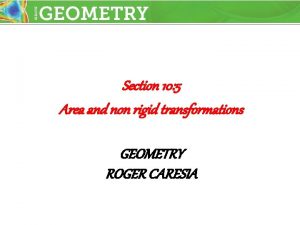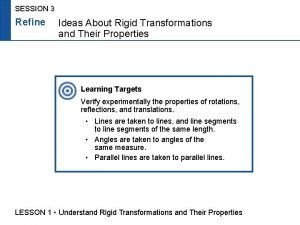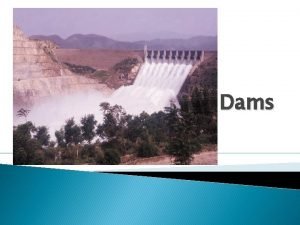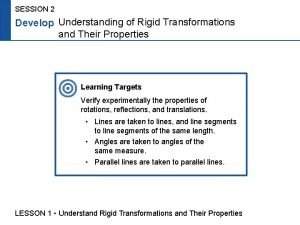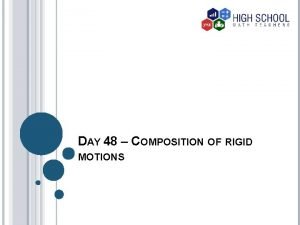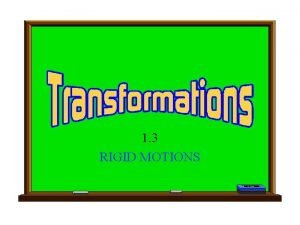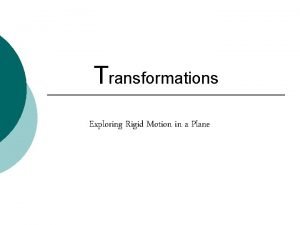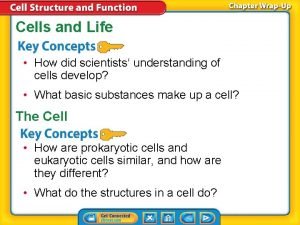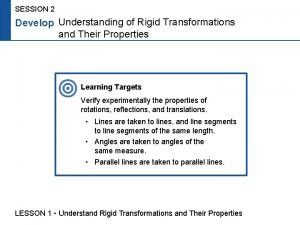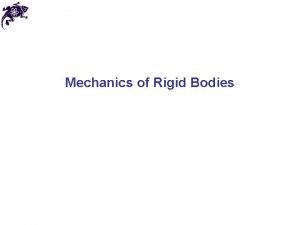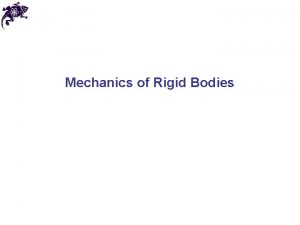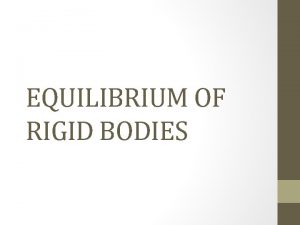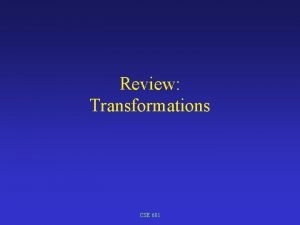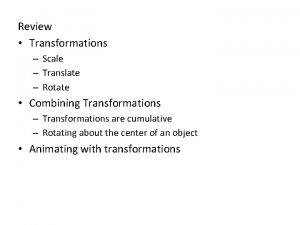SESSION 2 Develop Understanding of Rigid Transformations and








- Slides: 8

SESSION 2 Develop Understanding of Rigid Transformations and Their Properties Learning Targets Verify experimentally the properties of rotations, reflections, and translations. • Lines are taken to lines, and line segments to line segments of the same length. • Angles are taken to angles of the same measure. • Parallel lines are taken to parallel lines. LESSON 1 • Understand Rigid Transformations and Their Properties

Start Same and Different A B C D ©Curriculum Associates, LLC Copying is permitted.

Figure PQRSTU is a transformation of figure ABCDEF. a. Is figure PQRSTU a translation, reflection, or rotation? Explain your reasoning. b. Draw an arrow to show figure ABCDEF moved. Add the center of rotation for a rotation or the line of reflection for a reflection. ©Curriculum Associates, LLC Copying is permitted.

When figures are the same shape, you can identify corresponding parts between the figures. Angles in the same relative position are called corresponding angles. Sides in the same relative position are called corresponding sides. a. When you name figures that are the same shape using vertex labels, it is important to use corresponding vertices in the same order. Figure PQRSTU is the image of figure ABCDEF. Identify the corresponding sides. ©Curriculum Associates, LLC Copying is permitted.

When figures are the same shape, you can identify corresponding parts between the figures. Angles in the same relative position are called corresponding angles. Sides in the same relative position are called corresponding sides. b. How do the lengths of the corresponding sides compare? How do you know? c. In figure ABCDEF, is parallel to . You can write this using parallel line notation as . In figure PQRSTU, is ? How can you tell? d. Look at the other pairs of parallel sides in figure ABCDEF. What do you notice about the corresponding pairs of sides in figure PQRSTU? ©Curriculum Associates, LLC Copying is permitted.

Figures ABCYE, HIJKL, and PQRST are images of figure VWXYZ. Identify each image as a translation, reflection, or rotation. a. In problem 3, figure PQRST is an image of figure VWXYZ. Identify the corresponding angles. b. How do the measures of the corresponding angles in problem 4 a compare? How do you know? ©Curriculum Associates, LLC Copying is permitted.

Look at the two Model Its. How can corresponding parts help you to determine that an original figure and its image are the same size and shape? ©Curriculum Associates, LLC Copying is permitted.

Close: Exit Ticket Transform figure JKLMN to make an image, figure ABCDE. Draw and label figure ABCDE. Identify the transformation you used. Then use corresponding parts to show that the figure and image are the same size and shape. ©Curriculum Associates, LLC Copying is permitted.
